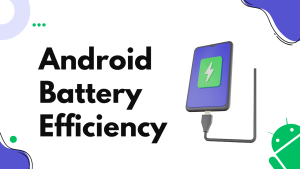Introduction:
Kotlin Coroutines have revolutionized asynchronous programming in Android development, providing a concise and efficient way to handle background tasks and asynchronous operations. In this blog, we will delve into Kotlin Coroutines and explore their features, benefits, and best practices. Whether you’re new to Coroutines or looking to deepen your understanding, this comprehensive guide will empower you to leverage the power of Coroutines in your Android projects.
Understanding Coroutines:
Coroutines are a lightweight concurrency design pattern that simplifies asynchronous programming by offering sequential and structured concurrency. They allow developers to write asynchronous code in a sequential manner, resembling synchronous code, which makes it easier to read, write, and maintain.
Key Concepts:
"suspend” Functions: These functions can be paused and resumed, allowing other code to execute in the meantime. They are the building blocks of Coroutines.- “CoroutineScope”: It provides a structured way to launch and manage Coroutines. It defines the context and lifetime of Coroutines.
- “Dispatcher”: Dispatchers determine the thread or thread pool on which the Coroutine runs. Common dispatchers include Main (for the UI thread) and IO (for IO-bound tasks).
- “CoroutineContext”: It represents the context in which a Coroutine runs, including the Dispatcher and other context elements.
1. Coroutine Builders:
Launch a Coroutine using ‘launch’:
CoroutineScope(Dispatchers.Main).launch {
// Perform background task
val result = performBackgroundTask()
// Update UI on the main thread
updateUI(result)
}
Execute a Coroutine and retrieve the result using ‘async and ‘await’:
CoroutineScope(Dispatchers.Main).launch {
val deferredResult = async(Dispatchers.IO) {
// Perform time-consuming task on the IO thread
performTimeConsumingTask()
}
// Do other work on the main thread
// ...
// Wait for the result and update UI
val result = deferredResult.await()
updateUI(result)
}
2. Coroutine Scopes:
Create a CoroutineScope tied to the lifecycle of an activity or fragment using ‘lifecycleScope’:
lifecycleScope.launch {
// Perform background task
val result = performBackgroundTask()
// Update UI on the main thread
updateUI(result)
}
3. Suspending Functions and Context Switching:
Define a suspending function:
suspend fun performBackgroundTask(): String {
// Perform asynchronous task
delay(2000) // Simulating a delay
return "Task completed"
}
Switch to a different Coroutine context using ‘withContext’:
CoroutineScope(Dispatchers.Main).launch {
val result = withContext(Dispatchers.IO) {
// Perform IO-bound task on the IO thread
performIOBoundTask()
}
// Update UI on the main thread
updateUI(result)
}
4. Exception Handling:
Handle exceptions thrown in Coroutines using try-catch blocks:
CoroutineScope(Dispatchers.IO).launch {
try {
// Perform background task
performBackgroundTask()
} catch (e: Exception) {
// Handle the exception
handleError(e)
}
}
5. Asynchronous Operations:
Use ‘async’ and ‘await’ to perform asynchronous computations and retrieve their results:
CoroutineScope(Dispatchers.Main).launch {
val deferredResult = async(Dispatchers.IO) {
// Perform time-consuming task on the IO thread
performTimeConsumingTask()
}
// Do other work on the main thread
// ...
// Wait for the result and update UI
val result = deferredResult.await()
updateUI(result)
}
6. Coroutine Context and Lifecycles:
Use ‘lifecycleScope’ to automatically handle cancellation when associated components are destroyed:
lifecycleScope.launch {
// Perform background task
val result = performBackgroundTask()
// Update UI on the main thread
updateUI(result)
}
Best Practices:
- Prefer Coroutines over older mechanisms like AsyncTask or Callbacks for handling asynchronous operations.
- Use structured concurrency to manage the lifetime and cancellation of Coroutines.
- Avoid blocking the main thread with long-running operations. Move them to background threads using appropriate dispatchers.
- Use ‘lifecycleScope’ or ‘viewModelScope’ to automatically handle cancellation in ViewModel or lifecycle-aware components.
- Profile and benchmark your Coroutines to ensure efficient resource utilization.
Conclusion:
Kotlin Coroutines have transformed the way asynchronous programming is done in Android. With their sequential and structured approach, Coroutines simplify the complexity of handling background tasks, making code more readable and maintainable. By understanding the key concepts and utilizing the provided code examples, developers can harness the power of Kotlin Coroutines to create efficient and responsive Android applications. Embrace the power of Kotlin Coroutines and elevate your Android development skills to the next level.




